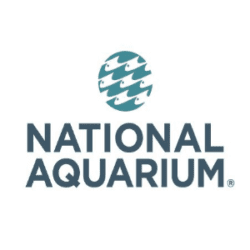Learn more about sea stars!
Did you know that sea stars have a peculiar way of eating? They digest prey outside of their bodies by extruding their stomach out through their mouth and enveloping their meal. Once the food is digested, their stomach is drawn back into their body.
Sea stars are invertebrates related to sea urchins, sea cucumbers and sand dollars, which are all echinoderms. Echinoderm means spiny skin—a reference to their hard, calcified skin, which helps to protect them from predators.
Sea stars have rows of tiny tube feet extending from the grooved surface on their underside. These tube feet allow them to crawl along the ocean floor using suction created by an internal water-driven hydraulic system. These animals also have an amazing ability to regenerate arms when they are severed, or even a new body in some species. All of their vital organs are located in the arms, so a portion of an arm could potentially grow a whole new sea star.
There are close to 2,000 species of sea stars in the world’s oceans. Most species have five arms, but some have many more—even as many as 40! At the Aquarium, you can see 10 species of sea stars throughout the exhibits. Look closely in the kelp forest habitat to spot the sun sea stars, which have 20 arms each!




